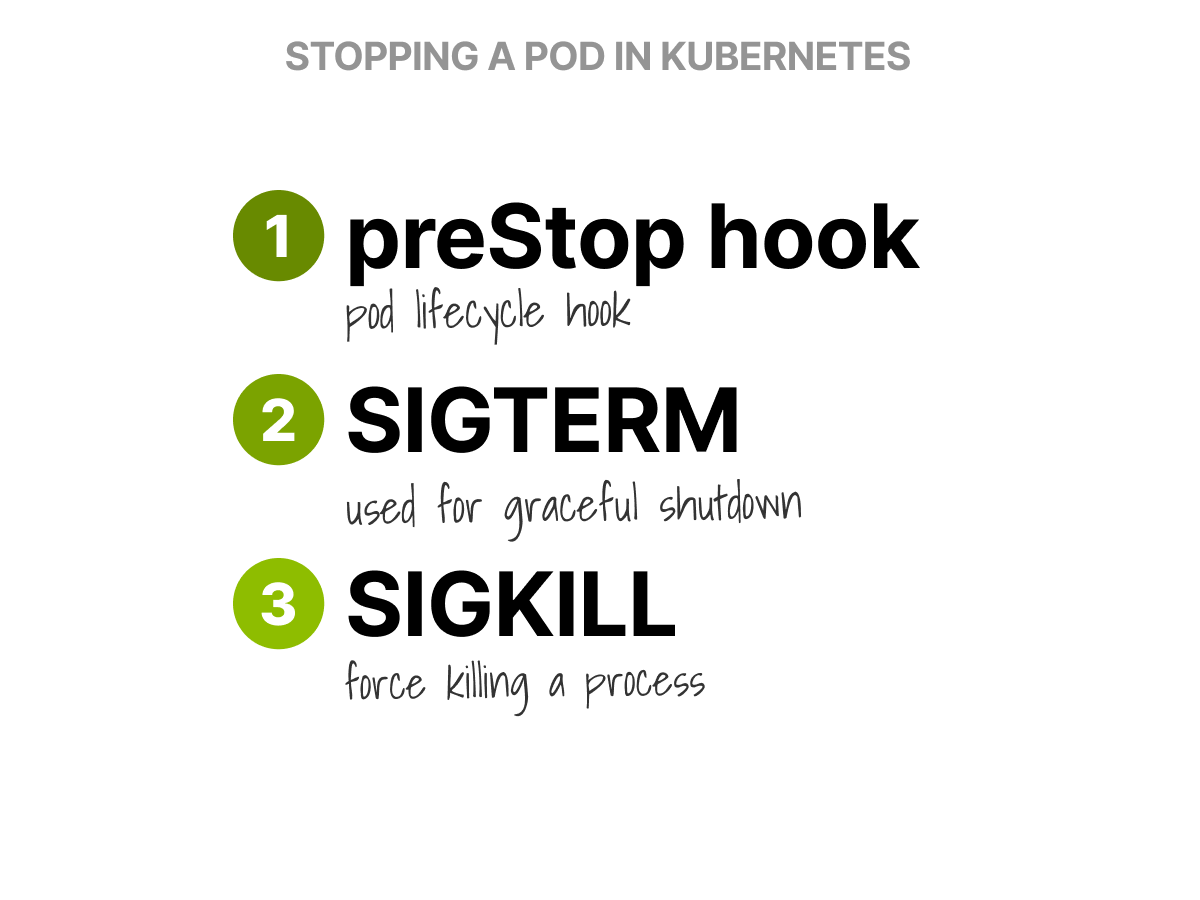The Kubernetes termination lifecycle
Once Kubernetes has decided to terminate your pod, a series of events takes place. Let’s look at each step of the Kubernetes termination lifecycle.
The container termination sequence

1 – Pod is set to the “Terminating” State and removed from the endpoints list of all Services
At this point, the pod stops getting new traffic. Containers running in the pod will not be affected.
2 – preStop Hook is executed
The preStop Hook is a special command or http request that is sent to the containers in the pod.
If your application doesn’t gracefully shut down when receiving a SIGTERM you can use this hook to trigger a graceful shutdown. Most programs gracefully shut down when receiving a SIGTERM, but if you are using third-party code or are managing a system you don’t have control over, the preStop hook is a great way to trigger a graceful shutdown without modifying the application.
3 – SIGTERM signal is sent to the pod
At this point, Kubernetes will send a SIGTERM signal to the containers in the pod. This signal lets the containers know that they are going to be shut down soon.
Your code should listen for this event and start shutting down cleanly at this point. This may include stopping any long-lived connections (like a database connection or WebSocket stream), saving the current state, or anything like that.
Even if you are using the preStop hook, it is important that you test what happens to your application if you send it a SIGTERM signal, so you are not surprised in production!
4 – Kubernetes waits for a grace period
At this point, Kubernetes waits for a specified time called the termination grace period. By default, this is 30 seconds. It’s important to note that this happens in parallel to the preStop hook and the SIGTERM signal. Kubernetes does not wait for the preStop hook to finish.
If your app finishes shutting down and exits before the terminationGracePeriod is done, Kubernetes moves to the next step immediately.
If your pod usually takes longer than 30 seconds to shut down, make sure you increase the grace period. You can do that by setting the terminationGracePeriodSeconds option in the Pod YAML. For example, to change it to 60 seconds:

5 – SIGKILL signal is sent to pod, and the pod is removed
If the containers are still running after the grace period, they are sent the SIGKILL signal and forcibly removed. At this point, all Kubernetes objects are cleaned up as well.
Conclusion
Kubernetes can terminate pods for a variety of reasons, and making sure your application handles these terminations gracefully is core to creating a stable system and providing a great user experience.

Comments